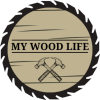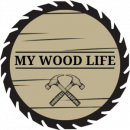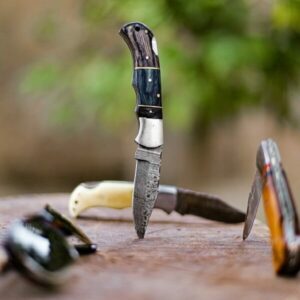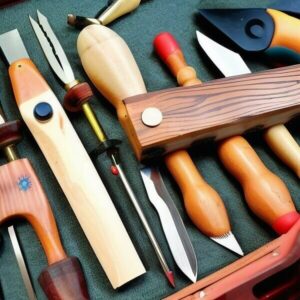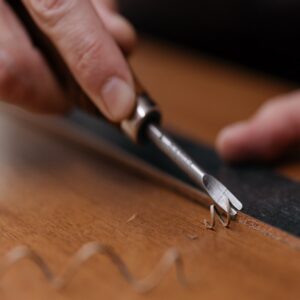Wood carving is an art form that has been around for centuries. It is the process of shaping a piece of wood using a variety of tools. There are many different types of wood carving, and each one offers its own set of challenges and rewards. In this blog post, we will discuss the different types of wood carving and what makes them unique!
There are many different carving styles, each with its own set of techniques and principles. The most common carving styles are:
Relief Carving
In relief carving, the carver removes material from the background to create a raised image on the surface of the wood. This style is often used for decorative purposes, such as carving floral designs or scenes from mythology.
The tools used for relief carving are typically gouges and chisels. The carver starts by removing the bulk of the material from the background, then uses finer tools to carve the details.
Sculpture Carving
Sculpture carving is a type of wood carving that focuses on creating three-dimensional pieces of art. This type of carving can be very intricate, and often features detailed designs.
The tools required for sculpture carving are similar to those used for relief carving and include a knife, gouge, chisel, and saw.
Chip Carving
Chip carving is a style of wood carving that uses small, sharp chips of wood to create decorative designs. This style is often used for creating intricate geometric patterns or lettering.
The tools and techniques used in chip carving are very different from those used in other styles of wood carving. The carver uses a knife to cut small chips of wood from the surface of the wood. This is a very time-consuming process, but the results can be stunning!
Carving in the Round
Carving in the round is a style of wood carving that involves shaping a piece of wood so that it has a round, cylindrical shape. This style is often used for making bowls, cups, ornaments, and other decorative items.
the tools used for carving in the round are typically very small and include a variety of knives, chisels, and gouges.
Caricature Carving
Caricature carving is a style of wood carving that exaggerates the features of the subject to create a humorous or satirical effect. This style is often used for making caricatures or statues of famous people. This type of carving can be quite challenging, as it requires a great deal of skill and precision.
Caricature carving differs significantly from other forms of wood cutting in terms of tools and methods. The carver uses a knife to carve away large chunks of material, creating an exaggerated feature.
One of the benefits of caricature carving is that it can be quite humorous. However, it is important to note that this type of carving can also be offensive if not done properly.
The tools required for caricature carving are similar to those used for treen carving and include a knife, gouge, and chisel.
Intaglio Carving
Intaglio carving is the opposite of relief carving and is also called “hollow relief”. In this style, the carver cuts away material from the foreground to create a sunken image on the surface of the wood. This style is often used for decorative purposes, such as carving portraits or scenes from history.
Intaglio carving is a challenging style that takes a lot of time and practice to master. The tools used for intaglio carving are typically gouges, chisels, and V-tools.
Whittling
Whittling is a type of wood carving that involves removing small pieces of wood from a larger piece with a sharp knife. This type of carving is often used for ornamental purposes, such as creating figurines ornaments, and can be done by hand or with the help of a power tool.
Whittling fits especially for beginners because it is a relatively easy way to start wood carving.
The main tool you need for whittling is a sharp knife, which you can use to carve away the wood in a controlled manner.
Chainsaw Carving
Chainsaw carving is a type of wood carving that uses a chainsaw to create decorative designs. This style is often used for making large pieces of art, such as sculptures or furniture.
The main advantage of chainsaw carving is the speed at which you can produce results. With a little bit of practice, you can quickly carve out intricate designs with a chainsaw.
However, chainsaw carving is also a very dangerous activity and should only be undertaken by experienced carvers.
Pyrography
Pyrography is the art of wood-burning. In this style, the carver uses a heated tool to create decorative designs on the surface of the wood. This style is often used for making intricate patterns or lettering.
The tools and techniques used in pyrography are very different from those used in other styles of wood carving. The carver uses a heated tool to burn designs into the surface of the wood. This is a very time-consuming process, but the results are definitely worth it.
Treen Carving
Treen carving is a type of wood carving that focuses on the small and delicate pieces of wood, such as spoons, bowls, and other household items. This type of carving can be quite intricate, and often features detailed designs.
Treen carving is a popular type of carving, as the finished products are both beautiful and functional.
The tools required for treen carving are also quite simple, making it a good option for beginners, and include a knife, gouge, and a chisel.
LoveSpoon Carving
LoveSpoon carving is a type of wood carving that is popular in Wales. This type of carving often features intricate designs, and the finished product is typically given as a gift to someone special.
The tools required for LoveSpoon carving are similar to those used for treen carving and include a knife, gouge, and chisel.
Flat-Plane Carving
Flat-plane carving is a type of wood carving that uses a flat chisel to create a smooth, even surface. This type of carving is often used for creating furniture and other household items.
The tools required for flat-plane carving are a flat chisel, a hammer, and a saw.
What Is The Best Type Of Wood Carving?
There is no definitive answer to this question, as it depends on personal preference and skill level. If you are a beginner, then whittling or treen carving may be a good option for you. If you are more experienced, then chainsaw carving or pyrography might be better suited to your needs. Ultimately, it is up to you to decide what type of wood carving you want to try. experiment with different styles and see what you enjoy the most. Who knows, you might even develop your own unique style of carving!
Which Type Of Wood Carving Suits You?
Now that you know about the different types of wood carving, it’s time to decide which one is right for you. If you’re just starting out, we recommend trying whittling or treen carving. These styles are relatively easy to learn and don’t require a lot of expensive tools.
If you’re looking for a more challenging carving project, try intaglio carving or pyrography. These styles take longer to master but the results are definitely worth it.
And if you’re feeling really adventurous, why not try chainsaw carving? Just make sure you know what you’re doing before you start!
Summary
There are many different types of wood carving, each with its own unique tools and techniques. The type of wood carving you choose should be based on your skill level and the desired results.
If you’re just starting out, whittling is a good option, as it doesn’t require much in terms of equipment. If you’re looking to create larger pieces of art, chainsaw carving may be a better option. And if you’re looking for something delicate and intricate, treen carving or LoveSpoon carving may be the way to go.
No matter what type of wood carving you choose, practice makes perfect. So get out there and start carving! Who knows, you may find a new hobby.
